What Are the Seven Weather Elements?
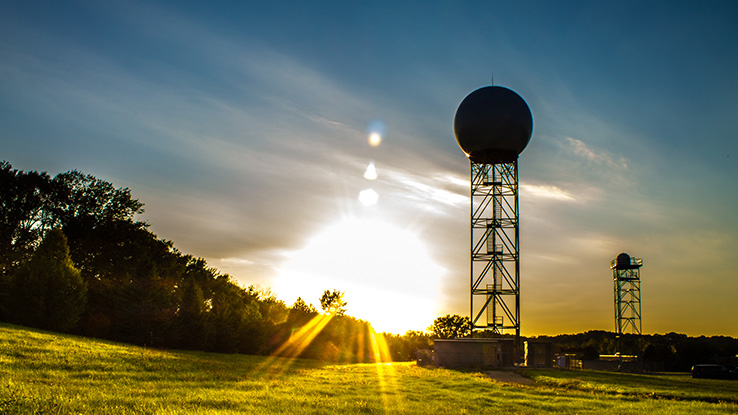
The weather plays a part in everything we do, from the way we live our everyday life to the choices we make for our vacations. In many areas, the weather can vary widely from one day to the next, with the conditions on some days being quite destructive. Have you ever wondered what affects the weather and what makes it change so much?
Several different factors affect the weather, from daily developing conditions to long-term trends. Temperature, humidity, atmospheric pressure, precipitation, wind, cloud formation and sunlight are the key elements that determine weather, and each component affects the world around us in a different way.
Temperature
Simply put, the temperature is a measure of how hot or cold the atmosphere is at any given moment. It’s one of the most obvious weather conditions that people immediately notice — no special equipment required unless you want to know the exact temperature reading. Meteorologists rely on thermometers to measure temperature in degrees — Fahrenheit in imperial measurements and Celsius in metric measurements. Scientists also use other measurement scales, such as Kelvin and Rankine.
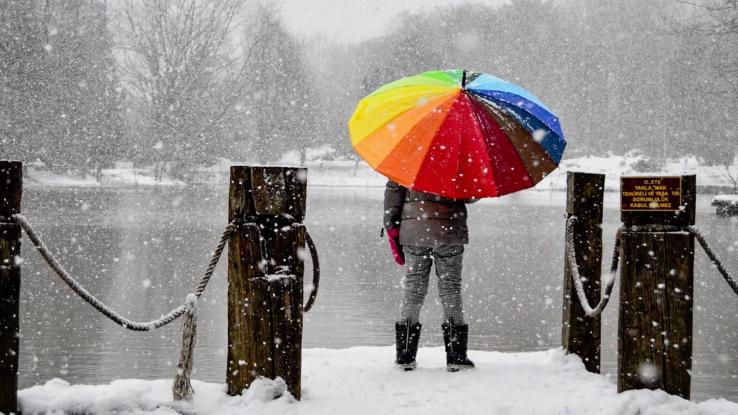
Temperature readings follow a logical standard, with higher degree measurements indicating higher levels of warmth. When skies are clear, the temperature can vary widely, depending on seasonal variations (position of the Earth and the sun), time of day, wind velocity and other factors. On cloudy days, the cloud cover also works to moderate temperatures.
Air Pressure
Atmospheric pressure, also known as barometric pressure or simply air pressure, is a measurement of the pressure exerted by the weight of the atmosphere in a particular area. The pressure of the atmosphere doesn’t necessarily have a direct effect on the weather at any given moment, but it offers an accurate method for predicting what the weather conditions are likely to be within a certain timeframe. Higher atmospheric pressure generally signals fair weather, while falling pressure can indicate that a storm is coming.
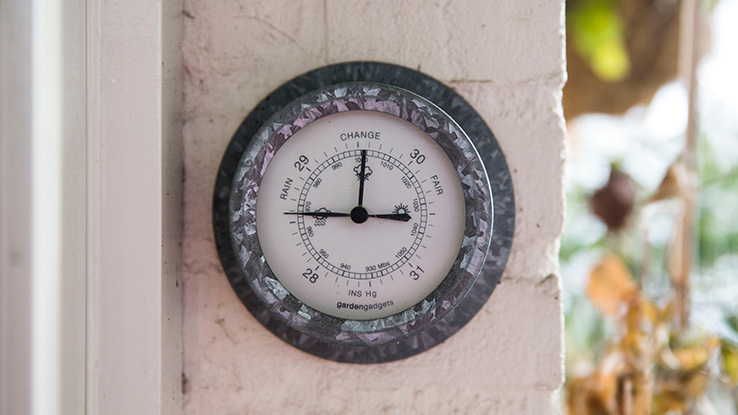
Meteorologists use barometers to measure the air pressure in an area. Monitoring rising and falling pressure on a barometer can help forecasters make educated predictions about the type of weather that is on the horizon as well as help meteorologists spot trends or abrupt changes in conditions.
Humidity
Humidity measures the amount of moisture in the air. Water vapor levels can rise and fall in the atmosphere depending on various conditions. In cooler weather, humidity in the air tends to be lower, while humidity often rises when the weather is warmer. Meteorologists use a hygrometer to measure relative humidity, which is the percentage of moisture in the air compared to the highest amount of water the atmosphere can hold at that specific temperature.

The closer the relative humidity gets to 100%, the more likely you are to see precipitation like rain, snow or fog. Another measurement of humidity that is familiar to many people is dew point, which occurs at the temperature the current amount of water vapor in the air would equal 100% relative humidity. The closer the dew point is to the current temperature, the higher the relative humidity climbs.
Precipitation
When the relative humidity reaches 100% or when the dew point matches the current temperature, condensation of moisture occurs in the atmosphere. We call this condensation precipitation, and it can take many different forms. The moisture could fall to the ground in the form of rain, and if the atmospheric conditions are right, thunderstorms could form. During some storms, ice crystals known as hail clump together and fall. Other storms may create other types of dangerous and damaging conditions, such as lightning and tornadoes.
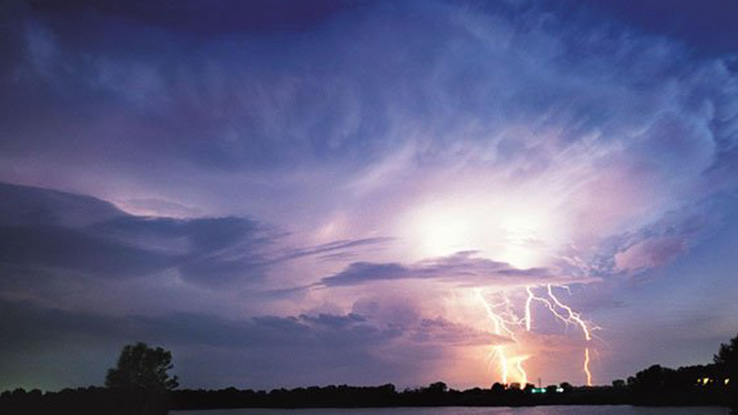
If the air is cold enough, the precipitation can fall to the ground as snow, sleet or freezing rain. Water vapor can also condense as a low hanging cloud near the ground’s surface, forming what we call fog.
Cloud Formations
Cloud cover works with the sun to determine weather conditions from day to day. Clouds are formations of water vapor in the sky that can take different shapes and have different effects on the weather. The highest, wispiest clouds consist of noctilucent, cirrus, cirrocumulus and cirrostratus clouds. Noctilucent clouds form more than 85,000 feet up in the mesosphere and don’t have anything to do with weather. Cirrus clouds are generally associated with fair weather unless they are followed by the formation of cirrostratus clouds, which typically form a day or so before rain or snowstorms. Cirrocumulus clouds are more common in fair, cold weather during the winter months.
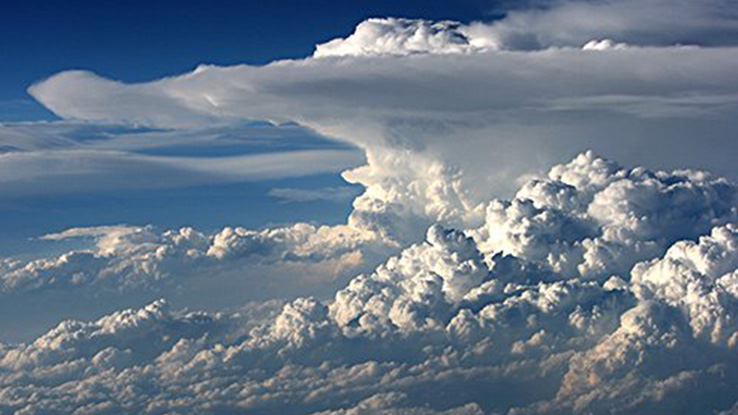
Clouds at mid-level altitudes of 7,000 to 23,000 feet include altocumulus and altostratus. Altocumulus clouds look a bit like storm clouds with darker, grayish sections, so it’s not surprising that they often indicate you can expect a thunderstorm later in the day. Altostratus clouds, which cover broader stretches of the sky and look gray or blue-gray, usually indicate looming rain or snowstorms.
Lower clouds form up to 7,000 feet above the ground and consist of stratus, stratocumulus and nimbostratus clouds. Stratus clouds are gray, wispy, very low to the ground and sometimes have rain falling from them. Drizzling rain is common with stratocumulus clouds, which fits their lumpy, gray appearance. Dark gray nimbostratus clouds often cover large sections of the sky and are a source of ongoing rain or snow.
Wind
As air moves parallel to the surface of the planet, it creates wind. Caused when the sun unevenly heats the Earth, these air currents move from high-pressure areas to low-pressure areas, which generally leads to west to east movement in the northern hemisphere and east to west movement in the southern hemisphere. The effect of pressure zones on air currents explains why winds often blow more strongly when weather fronts and changes are approaching.

At higher elevations in the atmosphere, winds can blow at much faster speeds than they do at the surface. These high-level winds can blow storm systems and areas of lower pressure across the surface of the atmosphere, causing changing weather patterns in different places along their path.
The Impact of the Sun and Seasonal Fluctuations
Sunlight isn’t actually one of the six official elements of weather, but the sun certainly plays a key role in atmospheric conditions all over the planet. Earth revolves around the sun, and that movement combined with the tilt of the planet on its axis leads to the different seasonal conditions we experience, depending on where we live in the world.
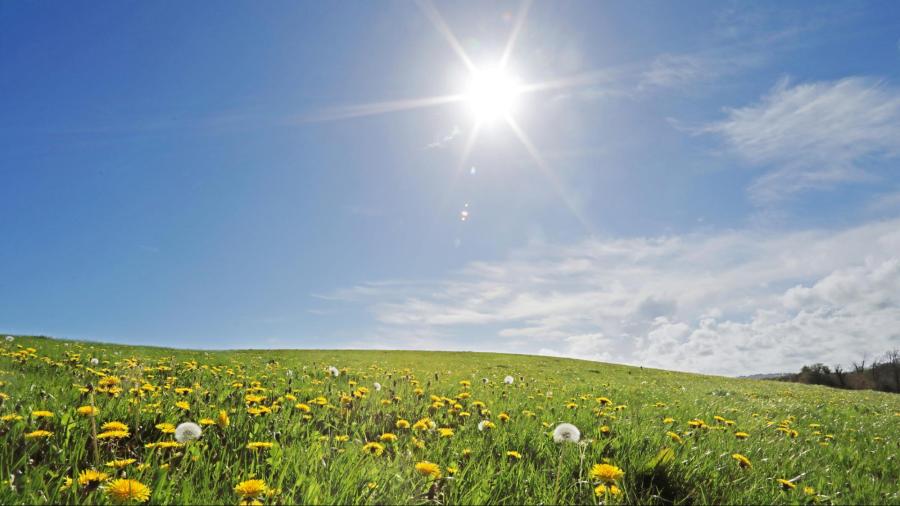
Earth tilts on its axis at a diagonal angle toward the sun as it revolves around it. Throughout each yearly revolution, the hemisphere that tilts closest to the sun experiences warm summer months, while the hemisphere pointed away from the sun experiences colder winter weather. These seasonal variations affect everything from typical daily temperatures to weather conditions that are tied to temperature, such as hurricanes and blizzards.





